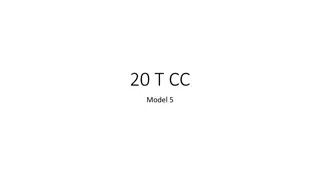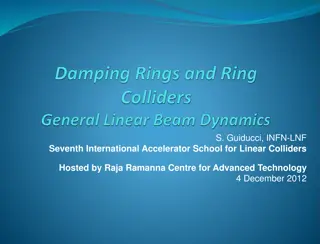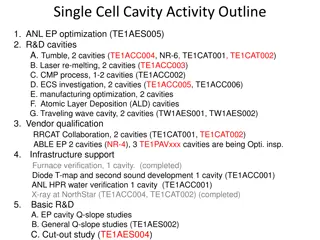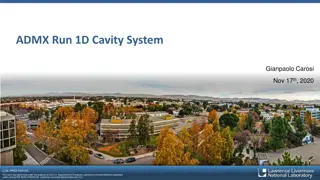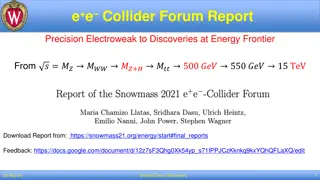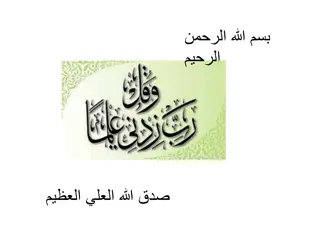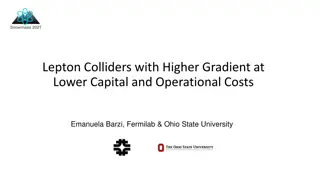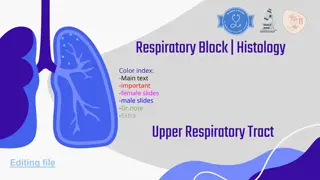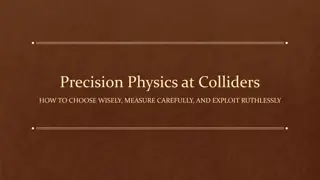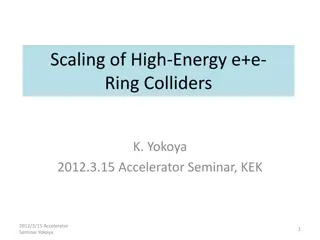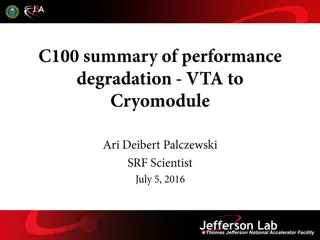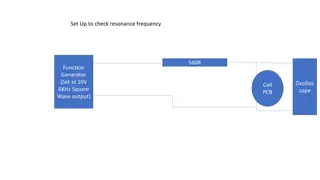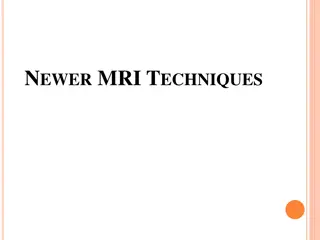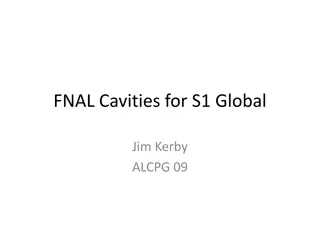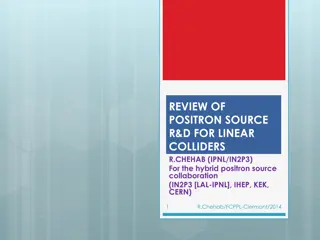Cavity Resonance Control in Linear Colliders: An Overview
Feng QIU discusses cavity resonance control techniques for Linear Colliders in this presentation. Topics include cavity voltage, phase, piezoelectric control, and stabilization of the RF field to optimize performance. The content emphasizes the importance of managing cavity resonances effectively to enhance accelerator operation.
Download Presentation

Please find below an Image/Link to download the presentation.
The content on the website is provided AS IS for your information and personal use only. It may not be sold, licensed, or shared on other websites without obtaining consent from the author.If you encounter any issues during the download, it is possible that the publisher has removed the file from their server.
You are allowed to download the files provided on this website for personal or commercial use, subject to the condition that they are used lawfully. All files are the property of their respective owners.
The content on the website is provided AS IS for your information and personal use only. It may not be sold, licensed, or shared on other websites without obtaining consent from the author.
E N D
Presentation Transcript
Cavity resonance control 1 Feng QIU, 10th International Accelerator School for Linear Colliders, Japan, 2016
Resonance control = Cavity A V c Kly/SSA Pt = Pf P V c ( ) t Piezo related to ( ) 2 H j f Stabilize the RF field (A&P) for beam acceleration Tuner (frequency ctrl.) Pt FB ( ) t Pf Pt (field ctrl.) Minimize the cavity input power Communication PC Internet dV dt ( ) + = c j V u 1/2 1/2 c 2 Feng QIU, 10th International Accelerator School for Linear Colliders, Japan, 2016
Source of detuning 3 Feng QIU, 10th International Accelerator School for Linear Colliders, Japan, 2016
Detuning Lorentz detuning: usually effects the PS mode machine. Microphonics: effects both of pulse mode and CW mode. It is difficult to apply the FB control for Lorentz detuning (in PS mode), feedforward is recommended (think about why?). ( ) 2 H j f ( ) t 0 Microphonics Lorentz detuning Repulsive magnetic force Attractive Electric force Deformation of the cavity RF Cavity 4
Sources of Microphonics Microphonics Scheme showing a technical drawing of a TESLA cavity welded in its cryounit. Possible detuning sources due to external vibrations or liquid helium level changes (microphonics) as well as the system response to external excitation are shown. 5 Feng QIU, 10th International Accelerator School for Linear Colliders, Japan, 2016
Microphonics Microphonics will leads to a error in the RF field. Phase FFT Detuning (Microphonic) d V ( ) + = j V R I c / 1 2 / 1 2 c L dt 6 Feng QIU, 10th International Accelerator School for Linear Colliders, Japan, 2016
Lorentz detuning A standing electromagnetic wave in a cavity exerts pressure on the surrounding resonator walls, This radiation pressure is ( 4 ) 1 2 2 = sP H E 0 0 The quantities H and E denote the magnetic and electric field on the walls. The deformation of the cavity will result of detuning (think about why?). Detuning Acc. field Repulsive magnetic force = K E 2 acc f Attractive Electric force Deformation of the cavity Const. RF Cavity 7
Resonance control 8 Feng QIU, 10th International Accelerator School for Linear Colliders, Japan, 2016
Tuner control Tuner system is used to compensate the cavity detuning. With Tuner Lorentz detuning Force Tuner H (s): H (s): H(s): Desired case H(s): Desired case Detuning effect Detuning effect HT(s): with tuner case Tuner Force freq freq ?: detuning Feng QIU, 10th International Accelerator School for Linear Colliders, Japan, 2016 9
Piezo & Tuner Mechanic Tuner: usually for slow control or course control (slow and low precision) Piezo: Fast and high precision (piezoelectric effects) Cavity side Feng QIU, 10th International Accelerator School for Linear Colliders, Japan, 2016 10
Lorentz detuning compensation Mainly Lorentz detuning, can be compensated by piezo feedforward system. Feng QIU, 10th International Accelerator School for Linear Colliders, Japan, 2016 11
Results @ ACC6 of FLASH Detuning 0 @ flat-time Problems 12 Feng QIU, 10th International Accelerator School for Linear Colliders, Japan, 2016
Resonance control for CW mode In CW mode machine, cavity is operated in CW mode, thus the cavity field is almost constant (steady state). The main detuning is Microphonics. ( ) ( ) = = tan tan ( ) steady state 0.5 0.5 MicroTCA Tuner ( TCA) Fine ctrl. Pf I/QIIR I/Q dem. hold Fil DAC ADC1 Piezo KI CW detector Digital I/O I/Q I/Q dem. sign IIR ADC2 KP Mechanical Tuner Pick up CCW ? = ??? ????? ?? Coarse ctrl. Phase difference Sensor: same with LLRF control Feng QIU, 10th International Accelerator School for Linear Colliders, Japan, 2016 13
Applications in Resonance control 14 Feng QIU, 10th International Accelerator School for Linear Colliders, Japan, 2016
DOB for resonance control It is also okay to use the DOB technique for tuner control if you have enough information of the tuner s transfer function. M s ( ) s = T s 0 H e d piezo + 1 15 Feng QIU, 10th International Accelerator School for Linear Colliders, Japan, 2016
DOB ctrl for resonance control @ KEK cERL It works but the gain margin is limited by some resonance peaks M s ( ) s = T s : 0 Assumption H e d piezo + 1 16 Feng QIU, 10th International Accelerator School for Linear Colliders, Japan, 2016 ERL(2015), F. QIU
TF of tuner system @ DESY XFEL TF of tuner system is some how complicated compared with cavity system. 2 k M ( ) s = k s H k + + N 2 2 k 2 s ( ) ( ) s ( ) s e = + T s H s H H k k d 0 k M s ( ) s = 1 k = 0 H 0 + 1 17 Feng QIU, 10th International Accelerator School for Linear Colliders, Japan, 2016
TF of tuner system Some advanced adaptive FF control technology @ DESY. 18 Feng QIU, 10th International Accelerator School for Linear Colliders, Japan, 2016
TF of tuner system - - - FF PI PI + AFF PI PI + adaptive FF 19 Feng QIU, 10th International Accelerator School for Linear Colliders, Japan, 2016
Summary We have learnt The main two disturbances related to resonance control. Piezo tuner and mechanic tuner for resonance control. Lorentz force detuning can be compensated by piezo tuner with FF control. Microphonics can be compensated by FB and FF if we know the TF of the piezo system. 20 Feng QIU, 10th International Accelerator School for Linear Colliders, Japan, 2016
Reference [1] S. Simrock, Z. Geng. The 8thInternational Linear Accelerator school. [2] T. Schilcher. Vector Sum Control of Pulsed Accelerating Fields in Lorentz Force Detuned Superconducting Cavities. Ph. D. Thesis of DESY, 1998 [3] F. Qiu et al., Application of disturbance observer based control in low- level radio-frequency system in a compact energy recovery linac at KEK, PRSTAB 18, 092801(2015). [4] A. Neumann, Compensation Microphonics in SRF Cavities to Ensure Beam Stability for Future Free-Electron-Lasers, PhD thesis, 2008 [5] F. QIU et al., Progress in the work on the Tuner Control System of the cERL at KEK, Proceedings of IPAC2016, Busan, Korea. 21 Feng QIU, 10th International Accelerator School for Linear Colliders, Japan, 2016







